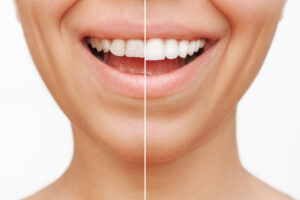We Will Consider Many Factors When Determining the Best Material for Your Veneers
Veneers are a flexible cosmetic dentistry procedure that can be used to hide a variety of flaws, including severe discoloration and tooth deterioration as well as tiny chips, gaps, and variations in tooth size and form. However, it’s crucial to pick the proper product if you want the veneers to meet your aesthetic objectives, appear natural, and last as long as possible. Today’s market primarily consists of two types of veneers: pressed ceramic porcelain and feldspathic porcelain.
Feldspathic porcelain veneers are painted by hand onto a model by artists who then bake the model after each layer of porcelain is applied to get the correct shape, thickness, and color. Molten porcelain material based on Lucite is injected into a mold to form pressed ceramic porcelain veneers. After cooling under continual pressure, the mold produces an extremely solid, homogenous material.
Based on the following four characteristics, you can count on California Dental Group to assist you in selecting the material that is best for your particular needs. Call us now at (800) 407-0161 to make an appointment with an experienced cosmetic dentist.
Damage resistance
Pressed ceramic porcelain veneers can be up to two times stronger than feldspathic porcelain veneers since they are created all at once rather than layer by layer. As a result, they are a superior option for restorations where the veneers could crack under flexure, shear, or tensile forces. Pressed ceramic veneers lower the possibility of wear from chewing or grinding damaging the enamel of neighboring teeth because they are really less abrasive than feldspathic materials.
Aesthetics
Both kinds of veneers can produce a lovely, organic appearance. In contrast to its pressed ceramic equivalents, feldspathic porcelain veneers are frequently thinner and more translucent. This can be a serious drawback in some circumstances since it lets the color of the natural tooth influence the color of the veneer.
The veneer needs to completely cover the original tooth in cases when it is already heavily discolored or in danger of going gray. If there is at least 0.8mm of space available to support the greater thickness of this sort of veneer, pressed ceramic porcelain veneers can produce a superior aesthetic outcome in this situation.
Reliability
Pressed ceramic veneers often fit the shape of the natural tooth better than feldspathic ceramic veneers because they are not prone to the slight warping and shrinking that occurs with each firing of feldspathic veneers. The cement coating needed to adhere the veneer to the tooth must be thinner the better the fit. As a result, the relationship is stronger and the veneer is more trustworthy.
Prep work required
Pressed ceramic porcelain veneers necessitate a larger amount of tooth surface removal. Patients who either do not want to have this operation done or who already have enamel or dentin loss that makes it unsafe to remove too much further material should be concerned about this.





